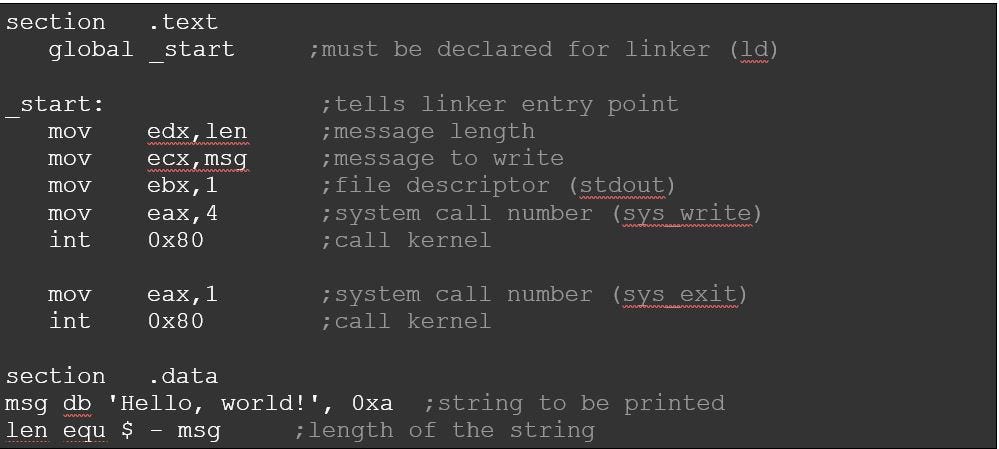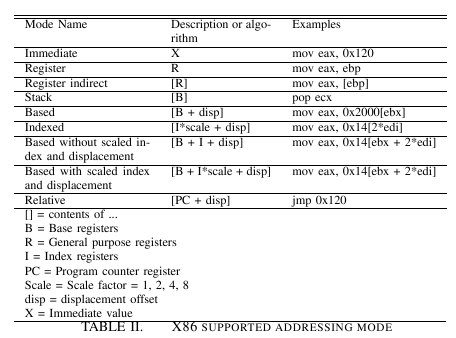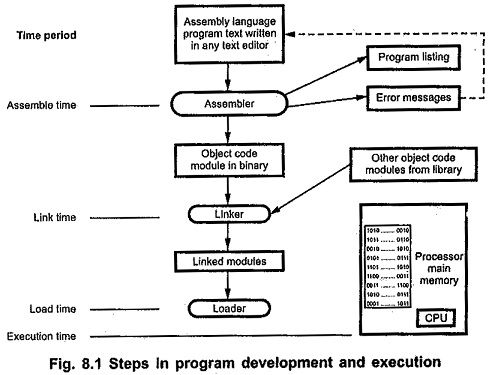In our digital world, software makes our devices and systems work. Knowing how computer hardware and software work is key. Assembly language is a low-level programming language that opens the door to this knowledge. This article will look at how Assembly language works and its importance in reverse engineering and cybersecurity.

Key Takeaways
- Assembly language gives you direct control over hardware, letting you manage system operations with precision.
- It’s vital for reverse engineering, helping analysts see how software works, find weaknesses, and fight against threats.
- Assembly language is a key tool for analyzing malware, checking for vulnerabilities, and fixing system issues in cybersecurity.
- Knowing Assembly language helps in finding and fixing code problems for better performance.
- It’s crucial for updating old systems and keeping critical parts of our infrastructure running smoothly.
Understanding Assembly Language
At the heart of computer programming is the link between software and hardware. Assembly language acts as a bridge for programmers to the computer’s core. It gives them direct control and insight into how the machine works.
At the Core of Hardware Interaction
Assembly language basics work at a basic level. They let programmers control the computer’s hardware directly. By using machine instructions and hardware interface, they learn about the machine’s structure and what it can do.
Mnemonics and Machine Instructions
Mnemonics are symbols for machine instructions in assembly language. Symbols like “MOV” for moving data or “ADD” for adding numbers help programmers give the CPU direct orders. This lets them use low-level programming fully.
| Mnemonic | Description |
|---|---|
| MOV | Move data between registers or memory |
| ADD | Add two operands and store the result |
| SUB | Subtract two operands and store the result |
| JMP | Unconditional jump to a specified address |
Learning assembly language helps programmers understand computer architecture better. It lets them make their code run faster and gives them more control in software development.
“Assembly language provides a bridge for operating systems to communicate with application programs, allowing users to understand relevant operating systems and computer architecture better.”
The Unique Role of Registers
At the core of assembly language programming is the complex relationship between the CPU and its registers. These small, fast storage areas in the processor are key to executing instructions and handling data well. Knowing how different registers work is key to being good at assembly language.
Instruction Pointer and Program Counter
The Instruction Pointer (IP/RIP/EIP) is a special register that keeps track of the next instruction to be done by the CPU. It serves as a program counter, leading the processor through the instructions in the code. The CPU updates the Instruction Pointer to move through the program step by step, making sure it runs smoothly and efficiently.
General-Purpose and Specialized Registers
Assembly language uses general-purpose registers like EAX, EBX, ECX, and EDX for math, data handling, and memory access. These registers are versatile, letting programmers do everything from simple math to complex data changes.
There are also specialized registers that are vital for managing how the program flows and accesses memory. The Stack Pointer (ESP/RSP) and Base Pointer (EBP/RBP) help manage the stack, making it easy to get to parameters and local variables. These registers make subroutines and function calls run more smoothly, saving system resources.
“Registers are the lifeblood of assembly language programming, enabling rapid and precise data manipulation at the hardware level.”
By knowing how different registers work, assembly language programmers can use the CPU’s full power. This helps make code run faster and better, and it brings out the best in low-level hardware interaction.
Reverse Engineering with Assembly
Assembly language is key in reverse engineering. It’s about taking apart compiled code to see how it works. By using Assembly, experts can understand software deeply. They can see the hidden parts of the code.
Deciphering Binary Code
Looking at software in Assembly helps analysts understand how it works. They can find bugs and make fixes. By studying Assembly, they can turn the binary back into the original code. This lets them see the logic and secrets of the software.
Cybersecurity Applications
In cybersecurity, Assembly is vital for checking malware and finding software flaws. It helps security experts see how bad software works. This lets them make better ways to catch and stop threats.
Knowing Assembly is a big deal for those in security and software analysis. It helps them get into the deep details of software. This is key for keeping systems safe and secure.
| Reverse Engineering Technique | Description |
|---|---|
| Reverse Engineering | The process of analyzing and understanding compiled code to uncover its functionality. |
| Binary Code Analysis | Examining the low-level machine instructions to understand software behavior and identify vulnerabilities. |
| Malware Analysis | Dissecting and understanding the inner workings of malicious software to develop effective countermeasures. |
| Vulnerability Assessment | Identifying and addressing potential security weaknesses within software systems. |
| System-level Debugging | Analyzing and troubleshooting low-level software and hardware interactions. |
Mainframe Assembler: A Legacy of Power
In the world of mainframe computing, Mainframe Assembler is key. It’s a low-level programming language that lets programmers access the hardware directly. This makes it great for writing code that runs fast and efficiently.
The Birth of Mainframe Assembler
Mainframe Assembler started in the 1950s, during the early days of mainframe computing. IBM, a leader in mainframe tech, created it. It turned machine language into symbols, making it easier for programmers to work with low-level programming.
Assembly language is a must-know for many, like security experts and embedded systems programmers. It helps with using macros and data structures. Many say learning assembly language helps clear up complex topics like pointers.
Today’s mainframe assembler tools make code easier to read and maintain with macros. Knowing how to take apart binary files is key in fields like cybersecurity and retrocomputing. It’s used for reverse engineering, fixing old software by taking apart and rebuilding it.
“Assembler is a low-level programming language that provides direct access to the underlying hardware, allowing programmers to write highly optimized and efficient code.”
The IBM Assembler has grown to make programs clearer and easier to understand. It now includes six tools that help with analyzing and getting to know applications better. As mainframe computing keeps changing, the importance of Mainframe Assembler stays strong. It’s a big part of the industry’s history and future.
The Role of Mainframe Assembler
Mainframe Assembler is key in mainframe programming. It lets programmers control the mainframe’s hardware and resources with precision. This language works directly with machine instructions, registers, memory, and I/O devices. It’s essential for tasks that need top performance, system-level operations, or working with special hardware.
Low-Level Hardware Control
With Assembler programming, developers can work at the core of the mainframe. They can tweak algorithms, use hardware features, and cut down on overheads. This is crucial for tasks that are very complex or need to run fast, where every bit of speed counts.
Efficiency and Optimization
Assembler is great at making code that runs fast and uses less resources. By writing directly to machine instructions, programmers can make programs that are both lean and fast. This is why Assembler is so valuable for tasks like mainframe assembler applications, hardware control, and system-level programming.
| Advantage | Description |
|---|---|
| Low-level hardware control | Assembler gives direct access to machine instructions, registers, memory, and I/O devices. This lets programmers control the mainframe’s hardware and resources with precision. |
| Optimization and efficiency | Assembler’s power to make highly optimized code means programs run fast and use resources well. It’s perfect for tasks that are very complex or need to run quickly. |
| System-level programming | Because Assembler works at a low level, it’s great for system-level programming. It’s essential when you need direct control over the hardware. |
In summary, Mainframe Assembler is crucial in mainframe computing. It lets programmers use the full power and efficiency of these systems. This is done through low-level programming, hardware control, and performance optimization.
Distinctions from PC Assemblers
Mainframe and personal computer (PC) assemblers both turn low-level instructions into code that computers can read. Yet, they have key differences. These come from the unique designs and goals of mainframe and PC systems over time.
Instruction Set Architecture Differences
Mainframes use complex instruction set computing (CISC) with many special instructions for big business needs. PCs, on the other hand, use reduced instruction set computing (RISC) with fewer, simpler instructions. This means mainframe and PC assemblers work differently because of these architecture differences.
Addressing Modes and Extensions
Mainframe Assembler has more ways to address data than PC assemblers. Mainframes need to handle data in complex ways, like indirect addressing. This gives mainframe programmers more control over the hardware.
PC assemblers have fewer ways to address data. They mainly use direct and indirect addressing. This suits the simpler needs of personal computers.

Mainframes and PCs have different architectures and ways to address data. Mainframes aim for top performance and reliability for big tasks. PCs focus on being affordable and flexible for everyday use.
Why Programming in Assembly
Assembly language is the basic part of computer programming. It lets programmers see how hardware and software work together closely. By learning assembly, programmers get low-level control over the system. This means they can make systems work better and interact with hardware in new ways.
The benefits of assembly language programming go beyond just learning about it. It helps developers solve hard problems and innovate in the digital world.
Assembly language gives direct access to the hardware. Programmers can make their code run more efficiently by understanding how the machine works. This is very useful for things like real-time systems, embedded devices, and high-speed trading.
Knowing assembly language also helps programmers understand how high-level languages turn into machine code. This is very useful for making code run better, fixing bugs, or working on cybersecurity applications. It connects the gap between software and hardware.
Learning assembly language might seem hard at first, but it’s worth it. It opens up new ways of understanding, creativity, and solving problems. This helps move computer science and technology forward.
The Assembly Programming Process
Programming in Assembly language has several key steps, from writing the code to running the final program. It’s important to know this process well to use assembly programming effectively.
Writing and Assembling the Code
First, you write the assembly code. Programmers use assembly language to create the program’s instructions and logic. They use registers, commands, and mnemonics to talk directly to the hardware. After writing the code, you assemble it.
Assembling turns the assembly code into binary code that computers can run. An assembler, a special software, does this job. It changes the assembly language into machine code.
Debugging and Execution
After assembling, debugging is the next step. This means finding and fixing any errors in the program. Debuggers, special software tools, help with this. They let programmers check how the program runs, its memory, and registers.
Finally, the fixed code runs on the computer’s processor. It does the tasks or operations the program was made for. This is the end of the assembly programming process, making the program work as planned.
“The assembly programming process is a delicate dance between the programmer, the hardware, and the translation tools, all working together to bring the desired functionality to life.”
Executing Assembly Programs
Developers use tools like DOSBOX and NASM to run assembly language programs. DOSBOX creates a virtual DOS environment for running old apps and using a command-line interface. NASM turns assembly code into binary that computers can read.
Setting Up the Environment
First, set up the development environment. This means installing and setting up DOSBOX, which mimics the DOS operating system. It’s where legacy assembly programs run. Make sure DOSBOX is installed and works with your system.
Assembling and Debugging
After setting up, assemble the code with NASM. This turns assembly instructions into binary that computers can run. Then, run the program in DOSBOX to test and fix any bugs.
Debugging can be tough because it involves the hardware’s low-level details. Tools like debuggers and memory viewers help find and fix problems.

“The feeling of satisfaction in writing assembly code and having complete control over resource usage is unparalleled.”
To execute assembly programs, you need to know the hardware well and use tools like DOSBOX and NASM. With these skills, developers can improve performance and understand how computers work better.
The Role of Debuggers
In the complex world of assembly language programming, debuggers are key. They help developers find errors, check memory, and look at registers. These tools give a deep look into how programs work, helping to make them better and more reliable.
Error Detection and Memory Inspection
Debuggers are vital for finding and fixing problems in assembly code. They let developers go through the code step by step. This way, they can find where errors happen, like wrong memory addresses or unexpected register values.
Looking at memory while the program runs is very useful. It lets programmers see what’s really going on inside their code. This helps them find the real reasons behind bugs.
Register Examination
Understanding registers is key in assembly language programming. Debuggers help developers check what’s in these registers. They can see how the code moves through the program and make sure it works right with the computer.
With debuggers, programmers can get a better grasp of their code. This makes debugging easier and helps them make their software better and faster.
Mainframe Assembler’s Relevance Today
Mainframe technology has made huge strides, but learning Mainframe Assembler is still key. Many companies use mainframes for vital tasks, and these systems often run on Assembler code. Knowing Mainframe Assembler is vital for keeping these systems running well and making them better.
Legacy System Maintenance
Companies are updating their IT, but keeping old mainframe systems running is crucial. Mainframe Assembler skills are a must for developers to:
- Understand and fix complex old code
- Make bug fixes and improvements for steady system performance
- Blend mainframe systems with new tech during updates
Performance Optimization
Knowing Mainframe Assembler deeply helps in high-performance situations. Developers can look into the system’s details to find and fix slow spots. This makes the system run faster and work better. This is super important in apps that can’t fail.
As companies update their mainframes, knowing Mainframe Assembler is more important than ever. It helps developers deal with old systems and add new tech smoothly. This makes updating systems successful.
“Mainframe Assembler expertise is essential for maintaining and optimizing legacy systems, as well as for successful system modernization efforts.”
Conclusion
Exploring programming shows how important assembly language is. It connects software and hardware, giving programmers and cybersecurity experts a deep look into how computers work. This language lets users control hardware directly and work more efficiently. It also helps keep old systems running and updates them for today’s tech.
Learning assembly language helps you understand how code and hardware work together. It lets people dive deep into computer systems, solve tough problems, and innovate in fields like mainframe computing. It’s useful for both experienced programmers and beginners looking to grow in their careers.
As we look to the future, assembly language’s lasting value shows its key role in programming skills. It’s crucial for working with software and hardware, and for programming at a basic level. Knowing assembly language will keep being key in the digital world’s future.
FAQ
What is the purpose of programming in Assembly language?
Assembly language acts as a bridge between programmers and the computer’s hardware. It gives programmers full control over the system and its resources. This language is used for detailed programming, making the most of the computer’s power, and understanding how the processor works.
What are the key features of Assembly language?
Assembly language uses special symbols that match the machine instructions the CPU runs. This lets programmers control the hardware with precision. It also uses registers for handling data and addressing memory efficiently.
How is Assembly language used in reverse engineering and cybersecurity?
In reverse engineering, Assembly language helps experts take apart software to understand how it works. This is key for finding bugs and making security fixes. In cybersecurity, it’s used for analyzing malware, checking for vulnerabilities, and fixing system issues.
What is the significance of Mainframe Assembler?
Mainframe Assembler lets programmers tap into the deep workings of mainframe computers. It’s vital for writing code that runs super efficiently. This is crucial for keeping old mainframe systems running well and for tasks that need the best performance.
How does Mainframe Assembler differ from PC Assemblers?
Mainframe computers use complex instructions, unlike personal computers which use simpler ones. This means mainframe assemblers and PC assemblers have different ways of working with instructions and memory.
What are the key stages in the Assembly language programming process?
Writing, assembling, debugging, and running the code are the main steps in Assembly language programming. Tools like DOSBOX and NASM help set up the environment and assemble the code.
How do debuggers aid in Assembly language programming?
Debuggers are essential for finding errors and checking memory and registers in Assembly language programming. They help programmers spot and fix problems, see memory states, and check register values.
Why is learning Mainframe Assembler still relevant today?
Many businesses still use mainframe systems for important tasks. Knowing Mainframe Assembler is crucial for keeping these systems running smoothly. It’s also important for finding and improving performance issues in critical situations.


